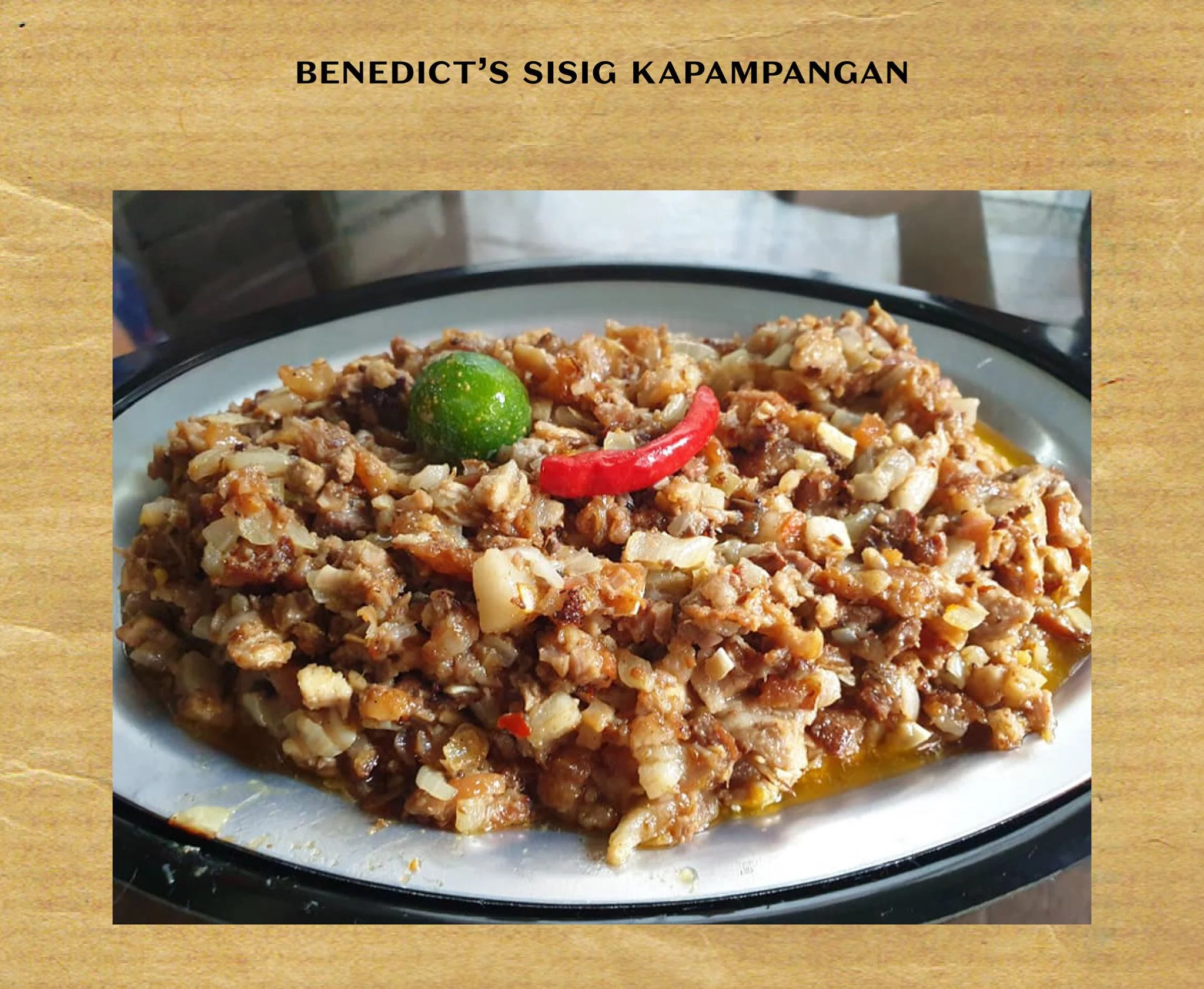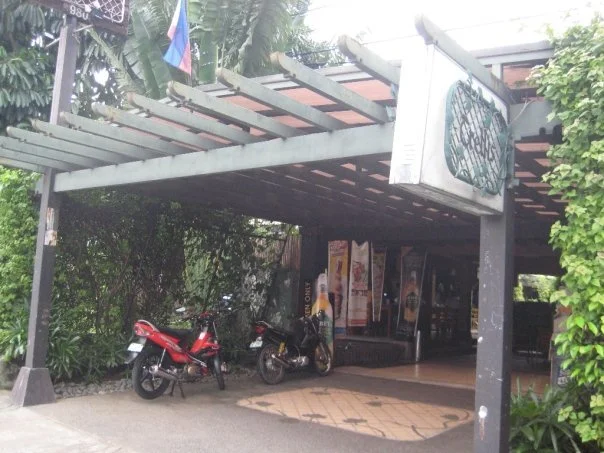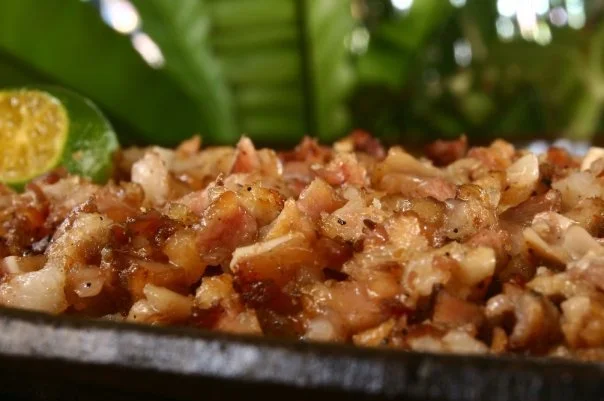Sisig’s Origin Story
/Aling Lucing’s Sisig (Source: facebook)
But what exactly is sisig?
According to the Center for Kapampangan Studies of the Holy Angel University in Angeles City, Pampanga, the word sisig appeared in a Pampango-Spanish dictionary by Fray Diego Bergaño published in 1732. It was defined then as a salad served with vinaigrette. During that era, it was common for women to nibble on fresh fruits or vegetables (i.e. unripe papaya, green mango, guava, banana heart) dipped in vinegar and salt in the early stages of pregnancy, to satisfy a craving for something sour (lihi in Filipino.) As the pregnancy progressed, the expectant mother would be fed a concoction of boiled pig’s ears, again soaked in vinegar. The cartilage was believed to help make the growing fetus’ bones stronger (speaking of today’s collagen.)
How it became a favorite appetizer of menfolk on a drinking spree is anybody’s guess. This is the sisig babi (pork) served for centuries – simply boiled pig’s head, sliced and flavored with sukang sasá (nipa palm vinegar,) onions, salt, black pepper, and chili (exactly the same as the Tagalog’s kilawin na baboy.)
The present-day sizzling sisig is a fine example of how one person in recent memory has steered the culinary landscape of a locality, the province, the archipelago, and then the world. No respectable Filipino eatery worth its fat (pun intended) will be without sisig, that yummy cholesterol-laden Pampango appetizer served on a sizzling plate.
Aling Lucing Cunanan of Angeles City is credited with having invented, or at least catalyzed, this present-day version in the early 1970s, doing a makeover on the boiled sisig soaked in vinegar. Aling Lucing was just one of a dozen barbeque vendors by the city’s railroad track, selling basically the same stuff of grilled chicken and pig’s parts.
Aling Lucing in Angeles City, Pampanga (Source; facebook)
According to her daughter Zenaida, one evening her mother accidentally burnt an order of pig’s ears on skewers. But instead of throwing it away, she chopped it up and served it like the boiled sisig, flavored with vinegar, claiming it’s her “new” version of the centuries-old recipe. It became an instant hit with the locals, and this grilled version became known as Aling Lucing’s Sisig. But still and all, this grilled version was served very much like the boiled sisig–soaked in vinegar and served at room temperature at that.
Then another Angeleño, Benedict Pamintuan, opened his own beer garden Sisig Benedict, giving Aling Lucing’s grilled sisig a new presentation, serving it on a hot skillet for that added crunchy finish. But even back then, the sizzling sisig was only popular among us locals and the accidental tourists.
Benedict’s Sisig Kapampangan (Photo by Jay Pelayo IV)
In 1980, my brothers Mario and Abong, together with cousin Dan Tayag, opened Trellis Restaurant in Quezon City. Among other Pampango delicacies, they also served sizzling sisig, adding chopped boiled chicken liver with their version. Trellis started the restaurant/grill genre bandwagon, and the sizzling craze caught on in the metropolis.
Trellis Restaurant in Quezon City (Source: Facebook)
Trellis’ sisig (Source: facebook)
Sisig has come to life all its own. Practically every other establishment has its own version. It is served with raw egg that will cook on the hot plate (making it now a dish to be eaten with rice,) or is mixed with mayonnaise (eww!) and what have you. For the more health-conscious, cholesterol-free variants have been concocted out of milkfish, squid, tuna, shrimp, tofu, or chicken (what the heck are you removing the fun for?!)
Fast forward to late October 2008, on that fateful day (the late) Anthony Bourdain interviewed me for the Philippine episode on “No Reservations.” Fortunately for us Filipinos, he loved our cuisine, especially Pampanga’s sisig. “It’s got everything I love about food — sizzling pork bits, with all that good, rubbery, fatty, crispy. And it goes wonderfully well with beer,” he wrote in his blog.
“Sisig is the breakaway dish that catapulted Filipino cuisine to mainstream America, and it’s a must-have at the proposed Food Market in New York,” he declared in an interview I had with him for ABS-CBN (in 2007) in Manila. He was then a guest speaker at the World Street Food Summit, organized by Singaporean KF Seetoh. Both were known to champion street food. During that same encounter, Bourdain told me: “Do you know that the Philippine episode of ‘No Reservations’ is the highest rated among my shows?”
Nowadays, it seems that just about anything chopped and served on a sizzling plate is called sisig. Is it authentic, original? What the heck! Nothing beats the genuine article, in all its pork fat glory! Just don’t forget the acidity from vinegar/calamansi and chili, and a bottle of sub-zero San Miguel beer to go with it. Bon appetit!
And in the US, food trucks are serving it over potato fries, burritos, and tacos.
Reposted with permission from the author’s Facebook page.
For Chef Claude Tayag’s sisig recipe, go to the Happy Home Cook page: http://www.positivelyfilipino.com/magazine/the-happy-home-cook-sizzling-sisig
Claude Tayag is both an artist and a highly acclaimed chef.
More from Chef Claude Tayag








